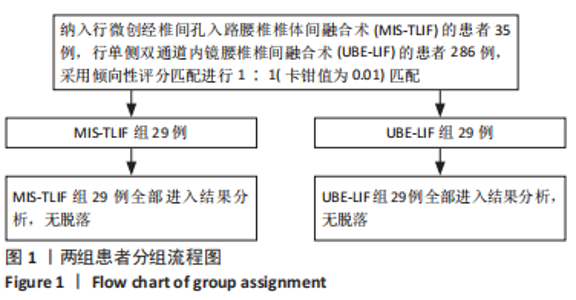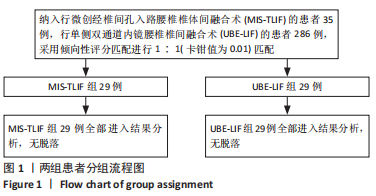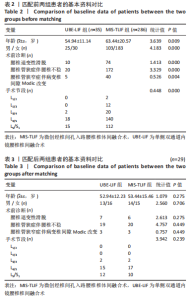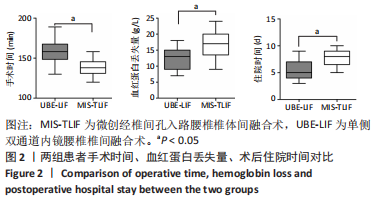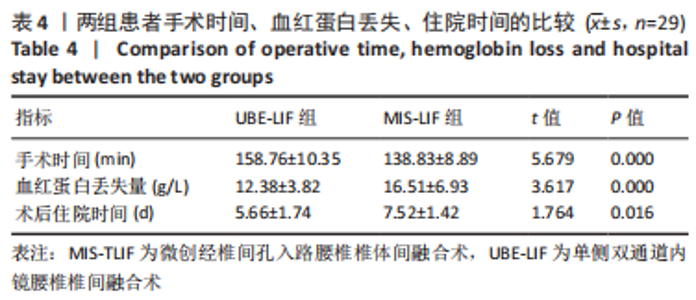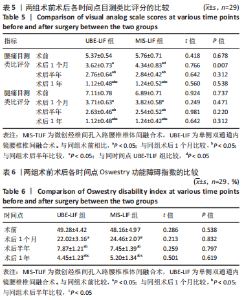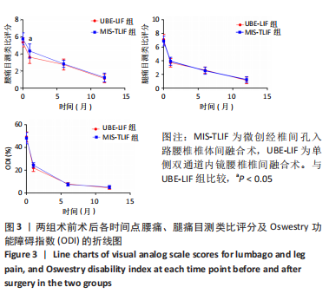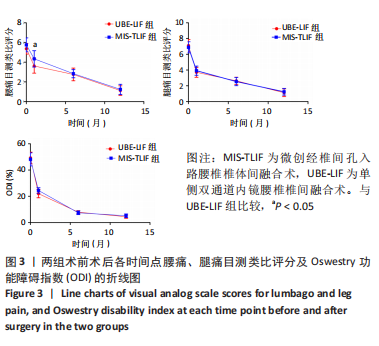[1] KATZ JN, HARRIS MB. Clinical practice. Lumbar spinal stenosis. N Engl J Med. 2008;358:818-825.
[2] PHILLIPS FM, SLOSAR PJ, YOUSSEF JA, et al. Lumbar spine fusion for chronic low back pain due to degenerative disc disease: a systematic review. Spine. 2013; 38:E409-E422.
[3] 姜乐涛,杜建伟. 腰椎管狭窄症的治疗进展[J]. 局解手术学杂志, 2021, 30(11):1012-1017.
[4] Hari A, Krishna M, Rajagandhi S, et al. Minimally invasive transforaminal lumbar interbody fusion-indications and clinical experience. Neurol India. 2016; 64:444-454.
[5] 钟睿,王润生,刘建恒,等. 不同入路微创经椎间孔腰椎间融合术治疗单节段腰椎管狭窄症的疗效比较[J]. 中国修复重建外科杂志,2019,33(7):807-813.
[6] KIM JS, PARK CW, YEUNG YK, et al Unilateral bi-portal endoscopic decompression via the contralateral approach in asymmetric spinal stenosis: A technical note. Asian Spine J. 2021;15(5):688-700.
[7] 汪文龙, 刘正, 吴四军, 等. 单侧双通道内镜下减压治疗腰椎管狭窄症的早期疗效观察[J]. 中国脊柱脊髓杂志,2021,31(10):911-918.
[8] 田大胜, 刘建军, 朱斌, 等. 单边双通道内镜技术治疗腰椎间盘突出症和腰椎椎管狭窄症[J]. 中华骨科杂志,2020,40(17):1155-1164.
[9] 张伟, 党晨珀, 姚彦斌,等. 单侧双通道脊柱内镜治疗腰椎间盘突出症的临床疗效[J]. 西北国防医学杂志,2021,42(5):341-346.
[10] KWON O, YOO SJ, PARK JY. Comparison of Unilateral Biportal Endoscopic Discectomy with Other Surgical Technics: A Systemic Review of Indications and Outcomes of Unilateral Biportal Endoscopic Discectomy from the Current Literature. World Neurosurg. World Neurosurg. 2022;168:349-358.
[11] 朱斌, 田大胜, 陈磊,等. 单边双通道内镜技术在腰椎疾病中的应用研究进展[J]. 中华骨科杂志,2020,40(15):1030-1038.
[12] HEO DH, SON SK, EUM JH, et al. Fully endoscopic lumbar interbody fusion using a percutaneous unilateral biportal endoscopic technique: technical note and preliminary clinical results. Neurosurg Focus. 2017;43(2):E8.
[13] 李佳奇, 王林峰, 高显达,等. MIS-TLIF治疗腰椎退变性疾病的研究进展[J]. 中国矫形外科杂志,2018,26(7):631-634.
[14] LENKE LC, HEDGES S, HUMPHREYS SC. Minimally invasire lumbar spine fusion. J Am Acad Orthop Surg. 2007;15(6):321-329.
[15] WANG Q, CHANG S, DONG J, et al. Comparing the efficacy and complications of unilateral biportal endoscopic fusion versus minimally invasive fusion for lumbar degenerative diseases: a systematic review and mate-analysis. Eur Spine J. 2023; 32(4):1345-1357.
[16] WANG L, LI C, HAN K, et al. Comparison of Clinical Outcomes and Muscle Invasiveness between Unilateral Biportal Endoscopic Discectomy and Percutaneous Endoscopic Interlaminar Discectomy for Lumbar Disc Herniation at L5/S1 Level. Orthop Surg. 2023;15(3):695-703.
[17] GUO S, TAN H, MENG H, et al Risk factors for hidden blood loss in unilateral biportal endoscopic lumbar spine surgery. Front Surg. 2022;9:966197.
[18] 倪双洋,张永远,孙宏慧,等.单侧双通道脊柱内镜下手术治疗腰椎管狭窄症的并发症及处理措施的研究进展[J]. 中国脊柱脊髓杂志,2022,32(7):659-662.
[19] 王宁,贝朝涌,万健,等.单侧双通道脊柱内镜技术行腰椎椎间融合术学习曲线研究[J].中国修复重建外科杂志,2022,36(10):1229-1233.
[20] 肖波,毛克亚,王岩,等.微创经椎间孔腰椎体间融合术采用混合内固定的学习曲线[J].中国脊柱脊髓杂志,2013,23(3):209-214.
[21] 孟繁亮,王元,陈焕林,等. 腰椎滑脱症MIS-TLIF手术疗效影响因素与防范措施[J]. 中国老年学杂志,2022,42(18):4455-4458.
[22] 袁景,赵宏亮.单侧双通道内镜在退行性腰椎管狭窄症中的临床应用现状[J].中国骨与关节杂志,2023,12(1):64-67.
[23] 何鹏,王彬,武振方,等.单侧双通道内镜椎间盘切除术的初步结果[J].中国矫形外科杂志,2022,30(21):2007-2009+2013.
[24] 杨贺军,牛旺,唐骞,等.单侧双通道脊柱内镜技术治疗单节段胸椎黄韧带骨化症[J]. 中国修复重建外科杂志,2023,37(2):174-179.
[25] KWON O, YOO SJ, PARK JY. Comparison of Unilateral Biportal Endoscopic Discectomy with Other Surgical Technics: A Systemic Review of Indications and Outcomes of Unilateral Biportal Endoscopic Discectomy from the Current Literature. World Neurosurg. 2022;168:349-358.
[26] TIAN D, LIU J, ZHU B, et al. Unilateral biportal endoscopic extreme transforaminal lumbar interbody fusion with large cage combined with endoscopic unilateral pedicle screw fixation for lumbar degenerative diseases: a technical note and preliminary effects. Acta Neurochir (Wien). 2023;165(1):117-123.
[27] 汪文龙,刘正,吴四军,等.单侧双通道脊柱内镜技术学习曲线与术后不良事件研究[J]. 中国修复重建外科杂志,2022,36(10),1221-1228.
[28] JUBBAL KT, CHANG D, IZADDOOST SA, et al. Resident Involvement in Microsurgery: An American College of Surgeons National Surgical Quality Improvement Program Analysis. J Surg Educ. 2017;74(6):1124-1132. |
